Whether you are suffering from pain in the low back, shoulders or neck, strengthening your core could be the key to your relief.
Daily functional movement is dependent on the core. Lack of strength, stability, and flexibility in these muscles can lead quickly to pain and even injury. If we spend much of the day sitting and lack core strength, even normal daily movements like getting in and out of the car put us at risk for injuring the back or neck.
The Anatomy of the Core
Contrary to popular belief, your core is not just made up of your abdominal muscles. The core is made up of many muscles that surround all sides of your torso, including:
Suffering from a sore neck, back and shoulders? Get our mobility guide to ease pain and soreness.
Get The FREE Mobility Guide To Fix Your Pain Today!
- The Pelvic Floor – Muscles that span the area underneath the pelvis, and can be engaged by practicing an exercise commonly known as “kegels”.
- Transverse Abdominis – The deepest abdominal muscles, also known as the “corset” of the core.
- Multifidus – Thin muscles that run the length of the spine, just next to the midline.
- Internal and External Obliques – Runs down the sides of the abdomen, vital for movements like twisting.
- Erector Spinae – These muscles run the length of the spine and are important for straightening and rotating the back.
- Diaphragm – A sheet of muscle that rests on the bottom of the thoracic cavity, right below the lungs. It plays a large role in respiration and trunk stability. (1)
Weak Core Muscles and Back Pain
The prevalence of low back pain has been rising and is currently the second most common cause of disability in American adults. (2) Low back pain can occur for many different reasons, but constant sitting is one of the major culprits. Sitting for long hours every day leads directly to weak abdominal muscles, tight hip flexors, and tight hamstrings. Your deepest hip flexor, the Psoas Major, attaches to the lumbar spine in your low back, so when this muscle gets tight, it puts strain on the lower back. This, combined with weak abdominal and back muscles, causes a much higher probability for pain, discomfort, and even injury.
Similar to low back pain, pain in the mid-upper back and neck can be caused by modern day habits like sitting. Known as “text neck”, many people suffer from a forward head where the chin juts forward and their shoulders round due to spending so much time looking down at their phones. This is an indication of a weak upper back and neck.
Core Exercises for Back Pain
Engage in these seven exercises three to four times a week to strengthen your core and decrease your back pain. For best results, focus on deep breathing and contracting the pelvic floor during each exercise.
Cat Cows Tucks | 15 reps
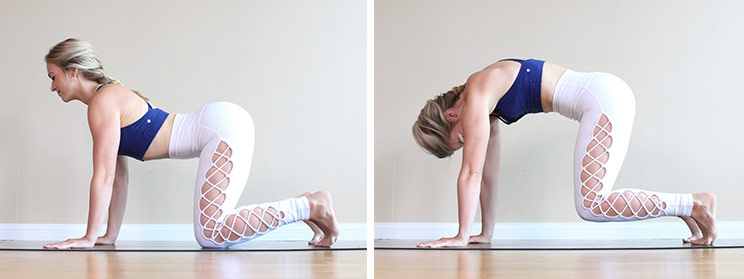
Constant sitting brings the pelvis into an anterior pelvic tilt, which can compress the lumbar spine. This exercise helps reposition the pelvis through engaging the abdominal muscles and pelvic floor.
- Start on in a tabletop position. Spread your fingers wide and stack your shoulders over your wrists and your hips over your knees.
- Tuck your toes under your feet. Draw your navel up towards your spine to engage your abs and find a lift through the pelvic floor. This is your spine in a neutral position.
- Inhale to come into cow pose, lowering your belly towards the floor and tilting your tailbone towards the sky. Press your heart forward between your arms and keep your shoulders squeezing down your back. Keep the back of your neck long and gaze over the tip of your nose.
- Then, exhale to press into your hands, rounding your back and gazing towards your belly button to come into cat pose. Keep pressing into your palms and lift your knees an inch of the ground.
- Keep flowing between cat and cow pose for 15 reps.
High Plank | 60 secs
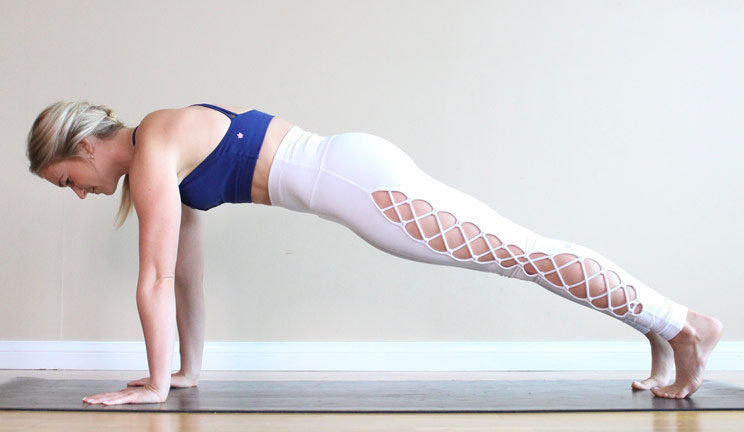
- Start in a tabletop position. Stack your shoulders above your wrists and spread your fingers wide.
- Step your feet back and straighten your legs to lift your knees off of the ground.
- Firm up your legs and abs, and up so that the space between your shoulder blades puffs up.
- Start by holding for 30 seconds, and work your way up to 60 seconds.
Leg Raises | 12 reps
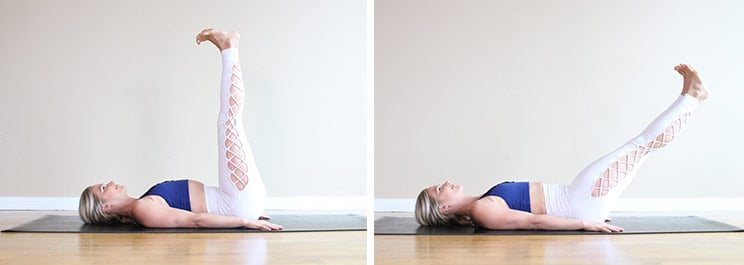
This exercise strengthens the transverse abdominis, the deep area of your core.
- Start by lying down on your back. Bend your knees and place your feet on the ground. Bring your arms down alongside your body with palms facing down.
- Press into your palms and reach your feet up towards the sky, straightening your legs.
- Flex your feet and draw your navel in towards your spine to press your lower back into the ground.
- Inhale as you lower your feet a few inches towards the ground. Exhale to lift your legs back up. If you start to feel strain in your lower back, lower your legs less.
- Repeat for 12 repetitions.
Side Plank | 30 secs per side

This exercise strengthens and tones the obliques.
- Start lying down on your right side. Prop yourself up on your right forearm and spread your fingers wide. Stack your left foot on top of your right and flex both feet.
- Reach your left hand up towards the sky. Inhale as you press into your right forearm and foot, lifting your left hip up towards the sky.
- Engage your abs, thighs, and glutes. Hold for 30 seconds, continuing to lift up through your left hand and hip.
- Repeat on the other side.
Superman | 12 reps

This exercise strengthens the muscles that surround the spine, as well as the glutes.
- Start by lying face down on your mat. Bring your feet mat-width distance and reach your arms out in front of you.
- Inhale to lift your head, chest, arms, and legs off of the ground.
- Keep the back of your neck long and feel the muscles surrounding your spine strengthening.
- Hold for a count of three, then slowly release back down.
- Repeat for 12 reps.
Bird Dogs | 10 reps per side

- Begin in a tabletop position. Stack your shoulders over your wrists and stack your hips over your knees. Engage your abs and pelvic floor.
- Inhale to reach your right arm out in front of you while lifting your left leg out and back behind you.
- Reach long in opposite directions with your right hand and your left foot, then exhale to release them back down. Switch sides.
- Alternate for a total of 10 reps per side.
Single Leg Bridge | 10 reps per side

This exercise strengthens the pelvic floor, transverse abdominis, and erector spinae.
- Lie down on your back. Bend your knees and place your feet together on the ground. Place your arms alongside your body, reaching your fingers towards your toes.
- Lift your right foot up and bend your right knee to a 90-degree angle. Draw your navel in towards your spine to engage your abs.
- Inhale to press into your palms and left foot, and lift your hips towards the sky. Squeeze your glutes at the top.
- Then, exhale to slowly lower your hips back down.
- Repeat for 10 reps, then switch sides.




 Spaghetti Squash Donuts with Marinara Dipping Sauce
Spaghetti Squash Donuts with Marinara Dipping Sauce
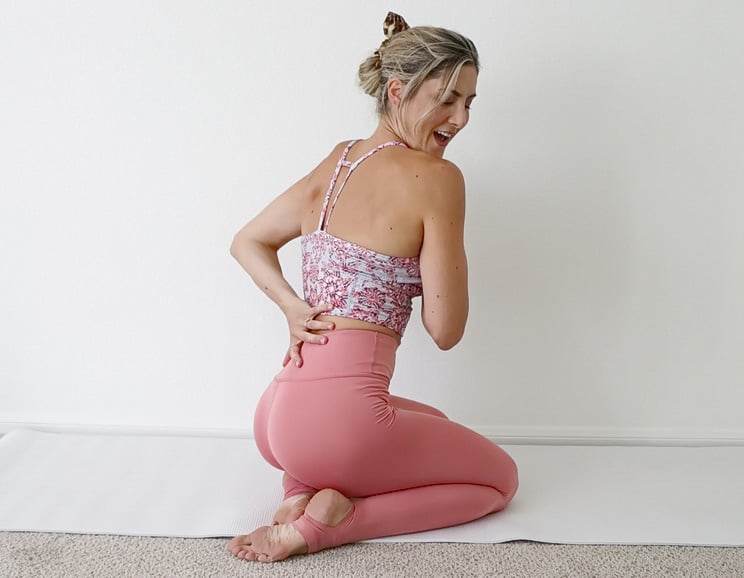


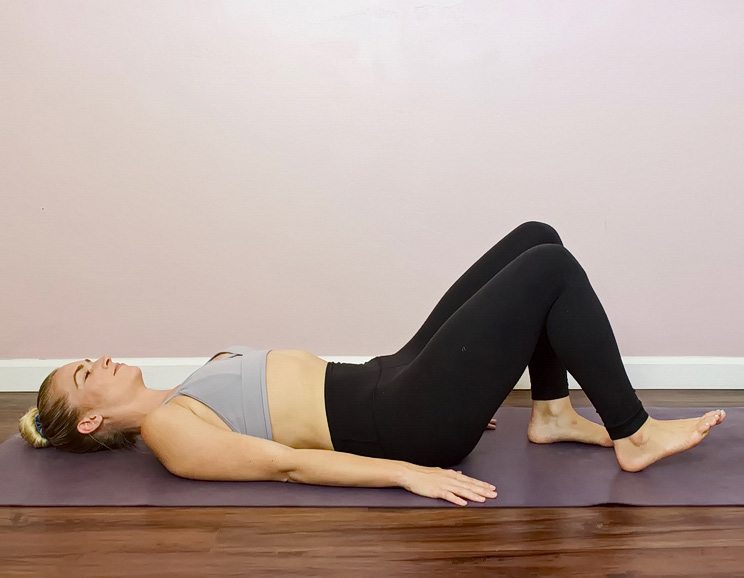
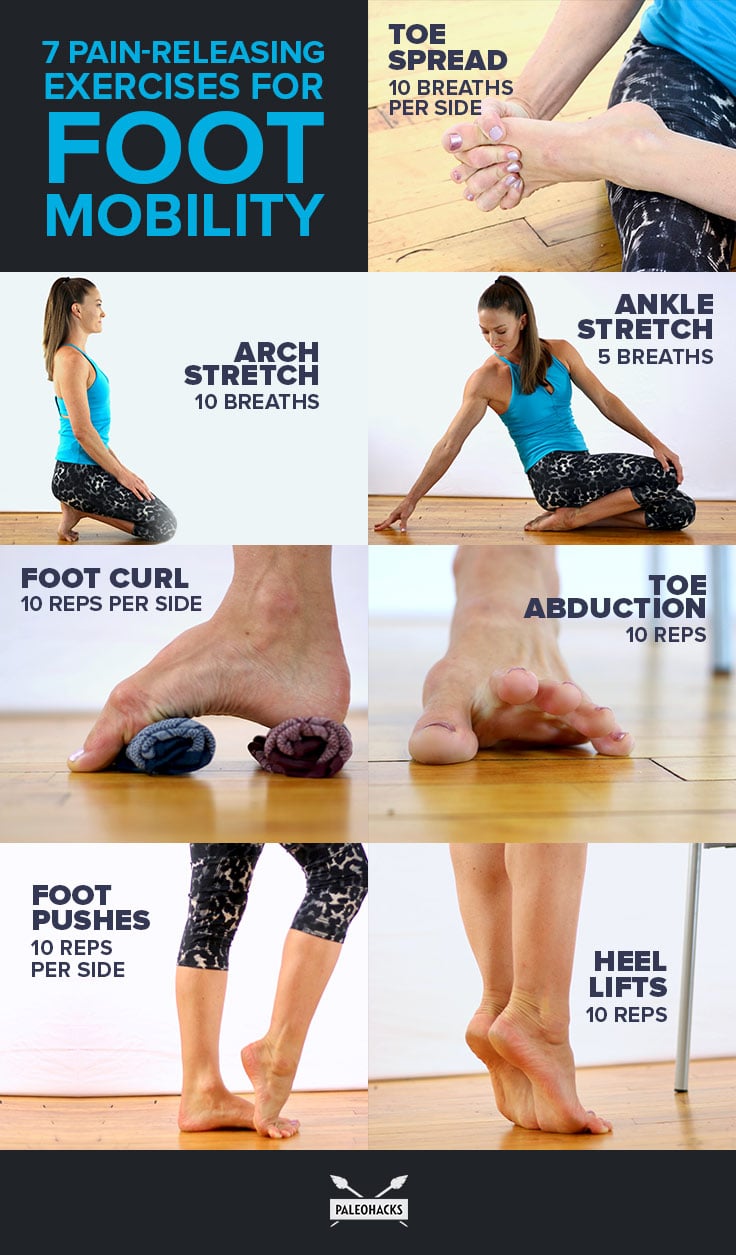
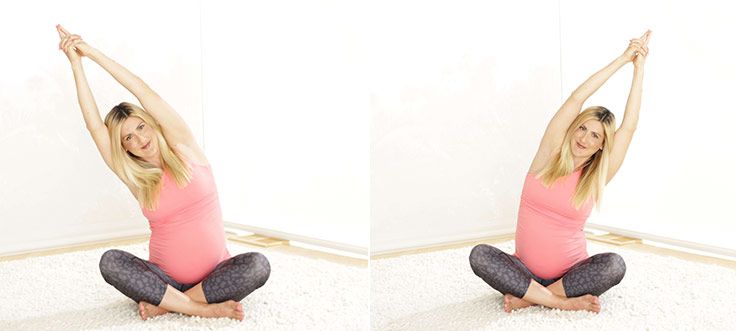
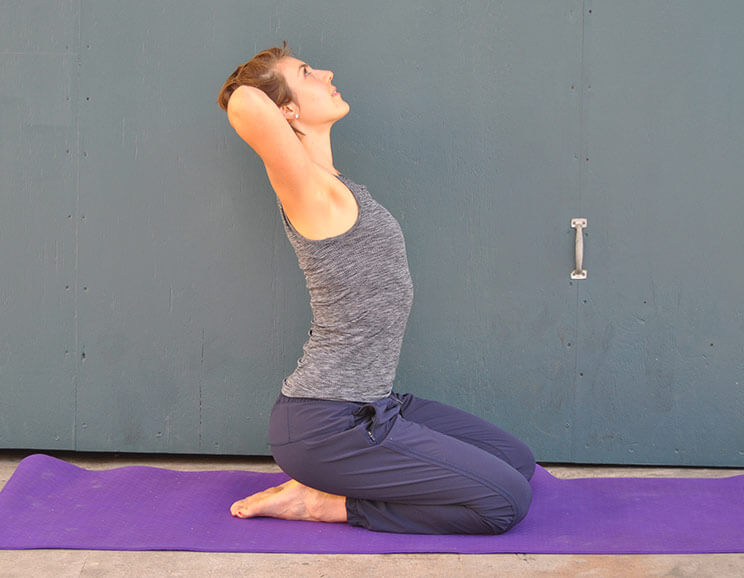
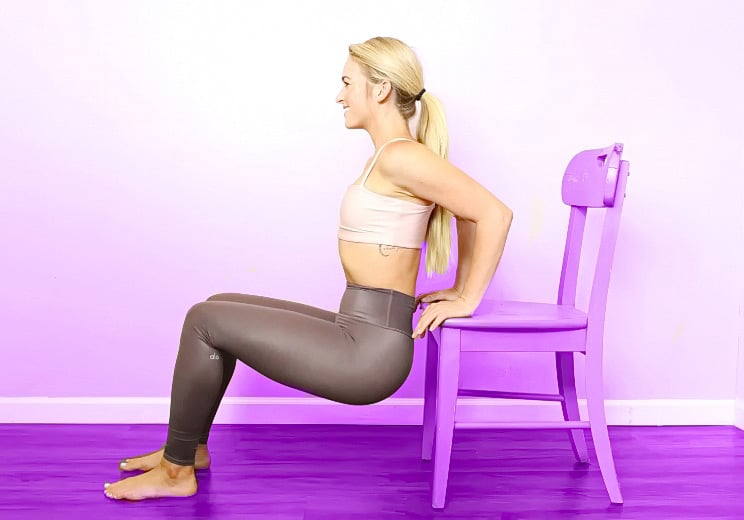
Show Comments